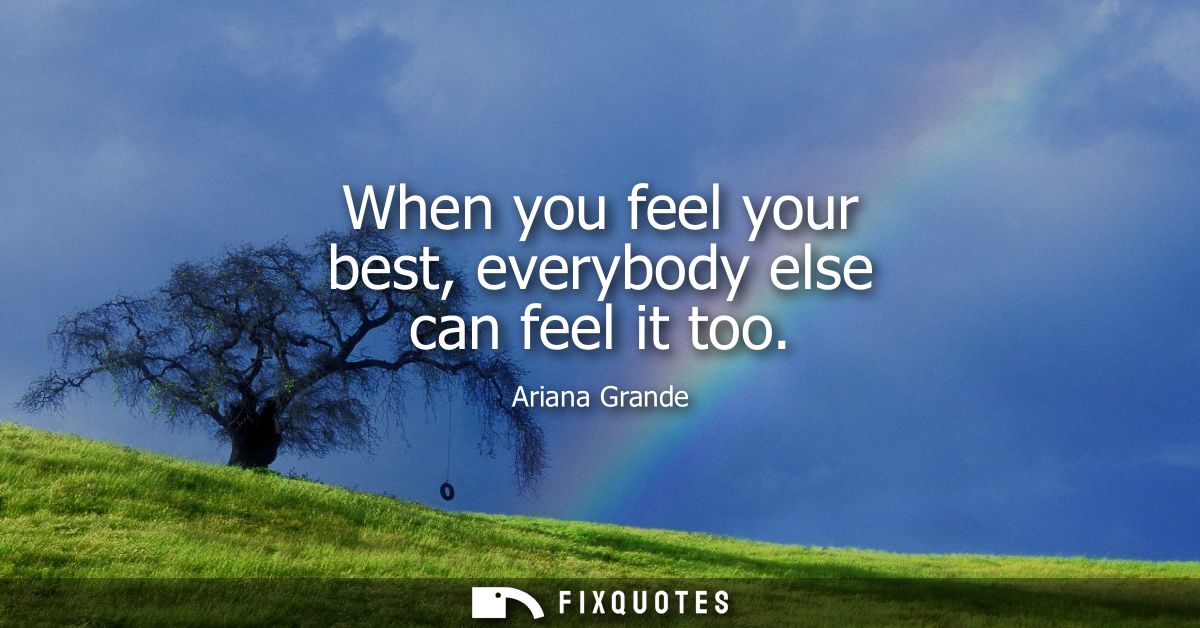"When you feel your best, everybody else can feel it too"
About this Quote
Feeling your best is not just a private victory; it’s a broadcast. Our bodies and voices transmit our inner state through posture, tone, timing, and micro-expressions. Confidence softens the shoulders, presence steadies the breath, and joy animates the eyes. Others pick up on this without trying, through emotional contagion and the subtle calibrations of attention we make in social spaces. One person’s grounded calm can slow the room’s pulse; one person’s playful spark can brighten the whole group.
There’s also permission embedded in well-being. When you are centered, you model a way of moving through the world that tells others they are safe to bring their best selves too. Generosity, patience, and curiosity grow more available when you’re resourced; you respond instead of react. Creativity flows, and collaboration becomes lighter because people feel seen rather than managed.
Feeling your best isn’t about perfection or constant cheer. It’s about coherence, your inner state aligning with your actions. That might look like setting boundaries, honoring rest, speaking honestly, and caring for your body. Sleep, movement, nourishing food, breathwork, and small rituals of care are not indulgences; they are communal investments. Even style and self-expression matter here: when you adorn yourself in a way that reflects who you are, you signal dignity and invite resonance.
Leaders who are well-rested and values-aligned foster psychological safety. Artists who are connected to their joy produce performances that elicit it in others. Friends who regulate their stress create a harbor during storms. Online, the effect persists: clarity, kindness, and playfulness travel through pixels as surely as tension does.
Prioritizing how you feel becomes an act of service. It amplifies your ability to uplift, to attune, to create spaces where others can breathe deeper. The energy you cultivate doesn’t stop at your skin; it ripples outward, turning private wellness into shared warmth.
More details
About the Author

